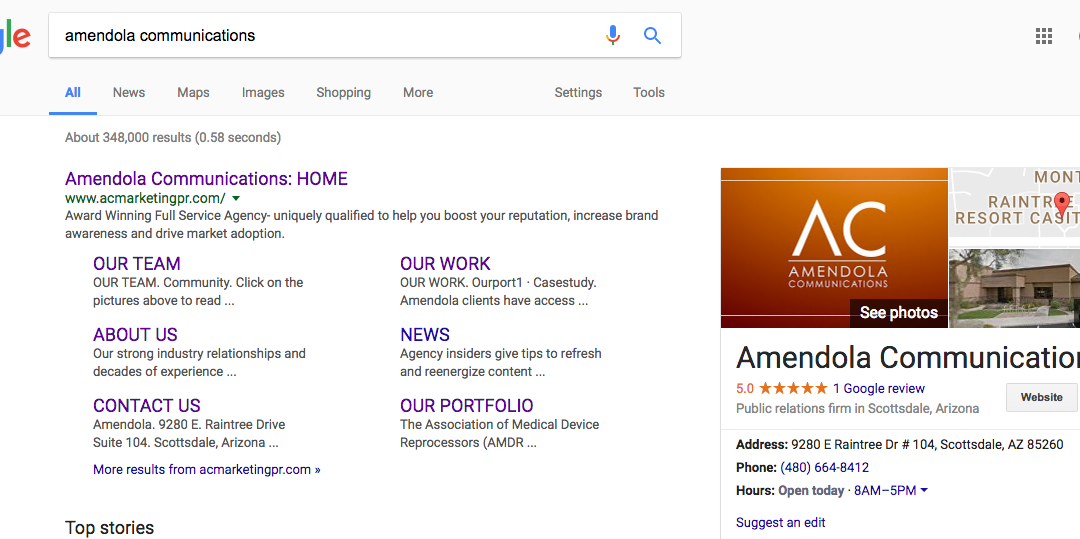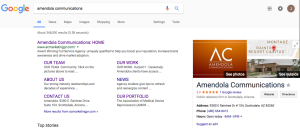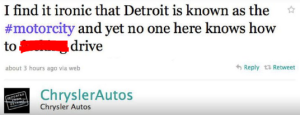by Jenna Warner | Oct 11, 2017 | Blog
Imagine this: after weeks of planning then pouring time and resources into your social media efforts you are starting to see results. You are gaining new followers and engaging with potential customers. Your efforts are clearly working and just when everything seems like sunshine and rainbows, there it is, loud and proud hate mail plastered on your front page and quickly gaining likes, shares and similarly-frustrated commenters. What do you do?
Take a deep breath.
Let’s face it, no one is lining up for their chance to deal with negative comments on social media. But, with the right plan of action in hand, dealing with these problems doesn’t have to be scary. It can be a great opportunity to learn more about your customers and engage with them at a critical point in the buyer’s journey.
When something negative about your company starts gaining traction you need to determine if it is a crisis that needs attention from more people or if it is a small problem that can be solved. If there is something negative about your company that is well-known and commonly addressed, it’s probably not a crisis. There is likely already a protocol for how to deal with this type of regular negativity within your PR or sales department. However, if there is something new about your product or company stirring up serious attention on social media it might be time to dive in and handle the crisis!
Phone a friend
If you are managing the social account or if you are personally invested in the subject of the negativity it’s a good idea to ask a colleague or your agency for some advice. Being removed from the situation helps when looking for the right approach to take.
Not everyone has the same sense of humor. It’s good to run your response by someone else to make sure your response won’t be taken the wrong way. While sometimes taking the low road may work in your favor, such as the social media sass-master at Wendy’s, it’s usually best to take the high road and be polite.
Avoid sounding defensive
Whenever something negative happens on social media it is easy to take it personally. Your first reaction will be to react in a defensive manner. Let’s say someone commented on your company site saying that you never provide xyz, when in fact you do. Well, of course you want tell the commenter they are wrong! However, that’s not going to get you many brownie points from your audience. What goes online stays online and can spiral quickly.
It’s like sending a snarky email to a coworker and then seeing they forwarded the email to a large group. *Insert big gulp* Remember that whatever you put out there can be interpreted and then shared in a way you didn’t originally intend.
Never reply to online reviews defensively and two years later like the screenshots above. As cringe-worthy as these comments are, it’s easy to go into defensive mode without a plan in place.
Let’s say one customer leaves a nasty review about your company or product. Then customer 2 comes along and reads the review. If you respond to customer 1 with compassion and show a willingness to listen to their feedback or fix the problem, you can turn that review into something positive for customer 2 to see. Instead of winding up on a blog post about what not to do when responding to negative reviews.
Take swift action
Negative comments and mentions on social media need to be handled in a timely manner and with care, just like a positive comment. Whenever possible, get ahead of the problem and address it before there is a chance for the comment to gain momentum.
When possible be proactive in avoiding potentially offensive or misinterpreted posts. When a national crisis or traumatic event happens hit pause on your social queue. Review posts before unfortunate timing can make your company seem obtuse.
Fix the problem
Do your best to fix the problem at hand when you have the opportunity. Don’t make any promises unless you know you can follow through. Show everyone that you are a company that listens to customers needs. After all they are the ones using your product or service. Most angry comments and reviews online stem from a need to be heard.
Fix the problem without escalating the frustration of the user when possible. Asking for more information and show a willingness to work through the problem if necessary. Offer to take the conversation to private message or offline.
Admit when you’re wrong
Mistakes will happen. Own up to them and diffuse the situation quickly. It’s better to admit you are wrong compared to letting someone else point out your flaws. Addressing the problem immediately shows your company is actively searching for a solution and aware when things go wrong. You may even be rewarded for your honesty.
Has a social media crisis ever happened to you? Comment with your story or questions!

by Jenna Warner | May 24, 2017 | Blog
Grab your Instagram-worthy coffee and make sure you are not guilty of these social media crimes.
Social media marketing is fast paced. Not only does your well thought-out and carefully sliced up 140-character tweet have a short shelf life, but each platform changes almost daily. However, there are some nuances that remain the same. These are my top 5 mistakes to avoid in the ever-evolving social media game.
1. Use old, wrong or low-quality logos
Twitter’s logo is a bird, not a plane and not a weird version of tumblers “t”. The official logo became the bird with no text in 2012. No, I’m not paid by Twitter’s branding manager, but I am fired up about getting everyone on the same page about the logo misuse!
Whenever you need a social media platform’s logo, it is best to visit their branding guidelines or resources. Usually, you can download a free kit that has the logo in many colors and every type of file format.
Another important logo faux pas to watch out for is the dreaded, low-quality profile picture or thumbnail. Nothing screams “We don’t care about this” more than a bad photo as your profile picture. It’s the first impression your potential customers see and you want it to be a good one! Don’t forget to look at your  entire digital presence to make sure you have at least one high-quality photo listed with your brand. Google search is a commonly missed opportunity. Don’t worry, it’s an easy fix! Google uses their very own social network information first to populate the search results side bar. Make sure you gave a great photo or high-quality logo and accurate information listed on your Google+ account.
entire digital presence to make sure you have at least one high-quality photo listed with your brand. Google search is a commonly missed opportunity. Don’t worry, it’s an easy fix! Google uses their very own social network information first to populate the search results side bar. Make sure you gave a great photo or high-quality logo and accurate information listed on your Google+ account.
2. Spam following attacks
Managers that do this are like the sign spinners of social media marketing.
I understand how this strategy developed as you can get short-term results from using this tactic. But these followers are hardly worth your efforts and are most likely either spam-bots or accounts that are not linked to your decision makers.
You should still keep your ratios clean (follow fewer accounts than you have followers) and follow industry leaders and influencers. The key is to focus your efforts when it makes sense for your strategy, not sporadically and aggressively. Twitter will actually step in when it becomes too much of a problem, but please, never get to that point.
3. Miss an engagement or sales opportunity
Uh, hello? It’s called SOCIAL media. Be social! Especially if you are a B2B organization, this type of engagement just isn’t as common as the B2C counterparts on social media. Capitalize on the opportunity as it arises! There is no shortage of free software available to help manage your engagement. Find brand champions that aren’t tagging your account, yet still praising your name, fix customer problems or complaints and develop new sales leads.
Make sure your engagement is timely and relevant. Search all hashtags used or links shared before posting or replying. Also, make sure the account you are engaging with is a real person not just a bot or an irrelevant twitter user.
4. Forget to sign out of the company account
Yikes! This is an ugly one. People get fired over this and it is not a great situation to be in. Personally, as a practicing social media manager, I steer clear of posting politics on my personal social accounts and I keep it PG. This choice decreases my risk of posting something truly terrible on a company account. Newton’s law of gravity doesn’t apply to the internet. What goes up, stays up on the internet.
There are too many examples like the twitter accident that happened to Chrysler.

5. Assume you have learned everything
The beauty and challenge of social media marketing is that it’s always changing. It’s hard to be the ultimate expert in something that is always changing and moving! Stay in touch with reality and assume there is always something new to learn and observe. I find it to be the best way to approach social media.
Hashtag conversations and meanings can change hourly, platforms have repositioned based on users habits and algorithms change all the time! The Internet is a place where traditional marketing practices and new forms of communication can be used in collaboration to create meaningful engagements with your audience.
Here are a few methods I use to stay up-to-date on my social media marketing skills:
Use social media platforms for personal use
Read and subscribe to social media marketing blogs and news outlets
Listen to podcasts on the digital strategy
Attend webinars on social media marketing
Look at competitors or other industries and figure out what is working for them
Make sure not to commit any of these social media mistakes and comment below with other social media rules that stand the test of time.

by Jenna Warner | Jan 18, 2017 | Blog
You may have heard of the 4 P’s of marketing: price, product, place, promotion. It’s a broad view to the marketing puzzle of taking a product or service from concept to consumer. Sometimes, businesses gain ground without thinking through these 4 Ps. Rapid growth is bound to plateau at some point and that when it is the perfect time to take a step back.
So, what’s next? Now, you just need to solidify how you can take your company to the next level. The next step may need to be more targeted and work quickly to reach the rapid growth you were projecting.
Nowadays marketing options are everywhere. You could pick multiple paths or you could home in on one big trend. The key is to find balance on the scale: Not spending too much time on one effort and not stretching resources too thin across multiple efforts.

Marketing efforts work best when they work together, with similar power across a range of efforts much like a crew of rowers all working at the same time to move. When one oar is doing all the work, you’re not going anywhere. The same thing happens in marketing and PR. It needs to be strategic and comprehensive to “move the boat.”
Carrying on the alliteration fun of the 4 p’s, here are 4 ways to start thinking like a marketer in your next strategic campaign. Use this process to focus your efforts for maximum results!
1. Picture
If you could picture your perfect marketing strategy plan what would it be? List all items or initiatives that you would like to see happen. This is the time to be a little unrealistic. Think of all the efforts that would make a difference in reaching your end goals. Include stretch goals, SMART goals, and even some ideas you know you don’t have the resources to complete.
Think of a variety of goals and efforts. For example maybe you want to increase your social media engagement or maybe you just want to better target a specific demographic.
Get your ideas out and on paper to discus with your team or your agency. The benefit to adding all of your goals in the discussion phase is that there might be options that are more plausible than you thought. This can also help generate new ideas from your team.
Don’t limit yourself in the initial brainstorm, or you might find yourself feeling some regret down the road. Prevent this by letting the creative juices flow early on in the process!
2. Prioritize
Now it’s time to get realistic. Until artificial intelligence (AI) and biorobotics are developed enough for us to be highly-productive cyborgs, we are going to have to live with the fact that we are human. There are only so many things that we can do at one time, and only so many things we can do well. Not to mention the budget we have to execute them.
There are also limitations as to how many or what type of marketing and PR efforts will benefit your company. You don’t want to waste your time creating a great marketing effort that falls on deaf ears. Like an Instagram campaign for Medicare, when only 15% of Instagram users are above the age of 50.
Do your research, ask others for their opinions, and see what efforts will make the most impact on your target market. You want to think of immediate lead generation, long-term lead generation and customer loyalty.
3. Plan Ahead
Now that you have a prioritized list of what you want to accomplish, its time to decide when things need to be completed. A thrown-together effort isn’t going to have much of an effect. In fact, if it’s sloppy it may have an adverse effect on your potential customers.
My favorite example of this happening, all too often, is the holidays. It seems every year I hear people say, “Oh the holidays just snuck up on me!” While I understand this, and may have said it myself, it’s just not true. We know the exact date years in advance. You may not be able to finish your personal holiday shopping before Thanksgiving every year, but it is important to stay ahead of schedule for your business.
It’s tempting to throw together a cool initiative after seeing another company perfectly execute one, but will it be valuable to your target market? If you think of a great idea for a Thanksgiving email at 9:00 pm on Thanksgiving eve and you can’t complete it, don’t scrap it! You can use it next year.
Train yourself to think like a retailer. Have you ever been annoyed at the sight of Christmas decorations for sale in August? Use that as your reminder to start thinking about holiday marketing efforts. Or other annual events related to your business.
4. Pull
Your efforts should pull your audience in. Every effort, regardless of how much power you have behind your strategy, should be focused on the end goal. When you go to execute your plan all efforts should be relevant to your customers and their pain point that you solve.
Your social media strategy should be targeted at your ideal customer, digital marketing efforts should all center on your customer and your article placements should be in publications your targets are reading. It’s easy to get caught up in something that looks cool or to fit in somewhere you have a connection. However, if it has nothing to do with your brand, what’s the point?
You know your customers pain points, but do your marketing efforts show your customers you want to alleviate them? For example: fitness gyms have an extreme increase of patrons and new memberships in the months of Jan- March, as many make their New Year’s resolution to get healthy. Let’s say your business is a solution for an automated member check in system that makes going to the gym easier for patrons and puts less strain on staff during rushes. You want to start marketing to gyms as they are preparing for this rush, not in the middle of the painful rush.
There are so many ways to incorporate your brand into something funky that isn’t a direct sell. But it should all point to you and your brand’s values in some way.
Set your business up for long term success by dreaming big, selecting what you can do, acting on it in a timely manner and using every effort to engage with your customer.




